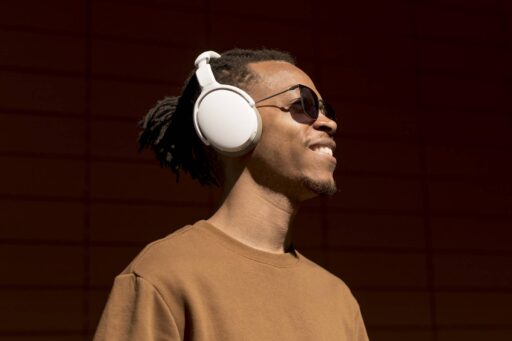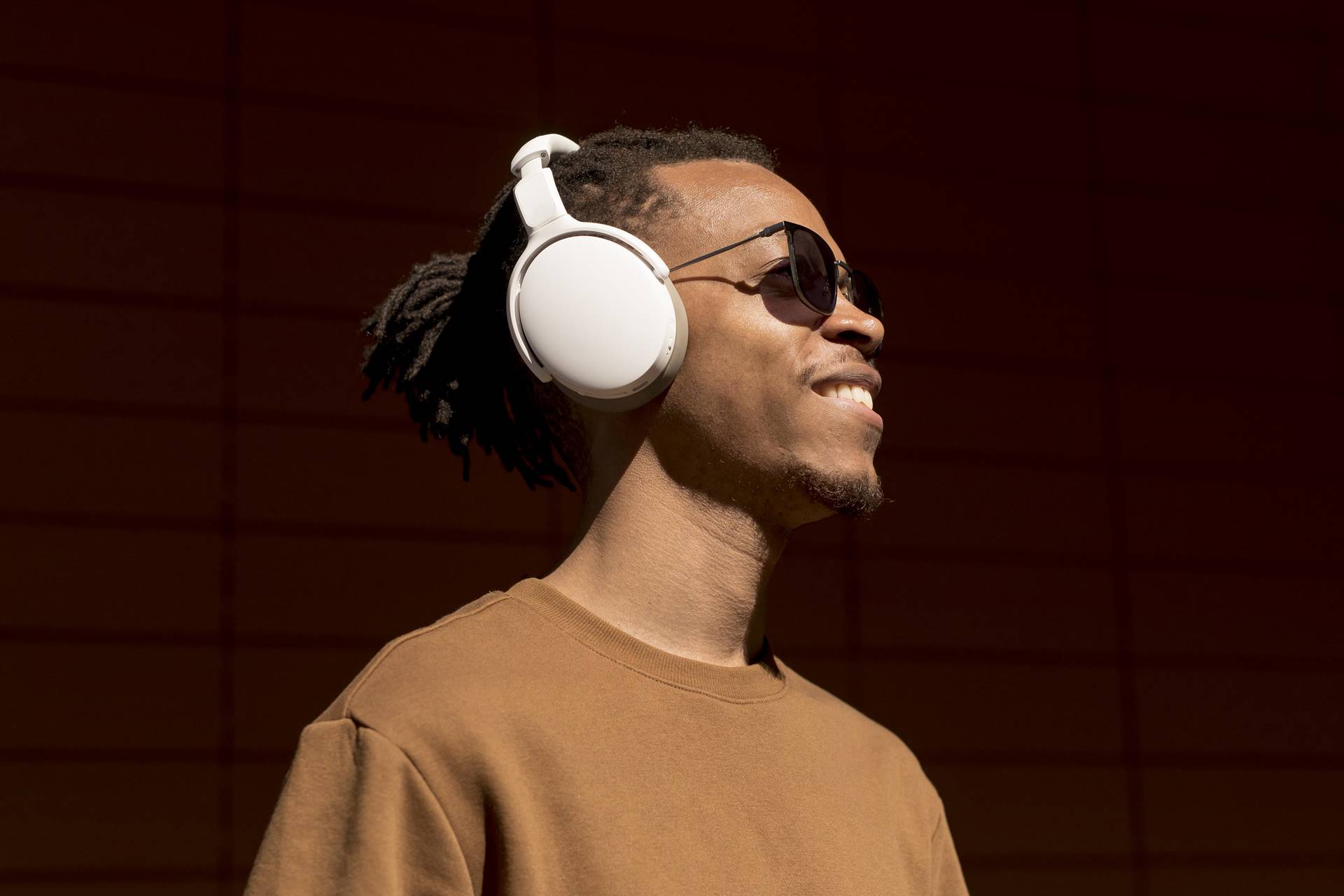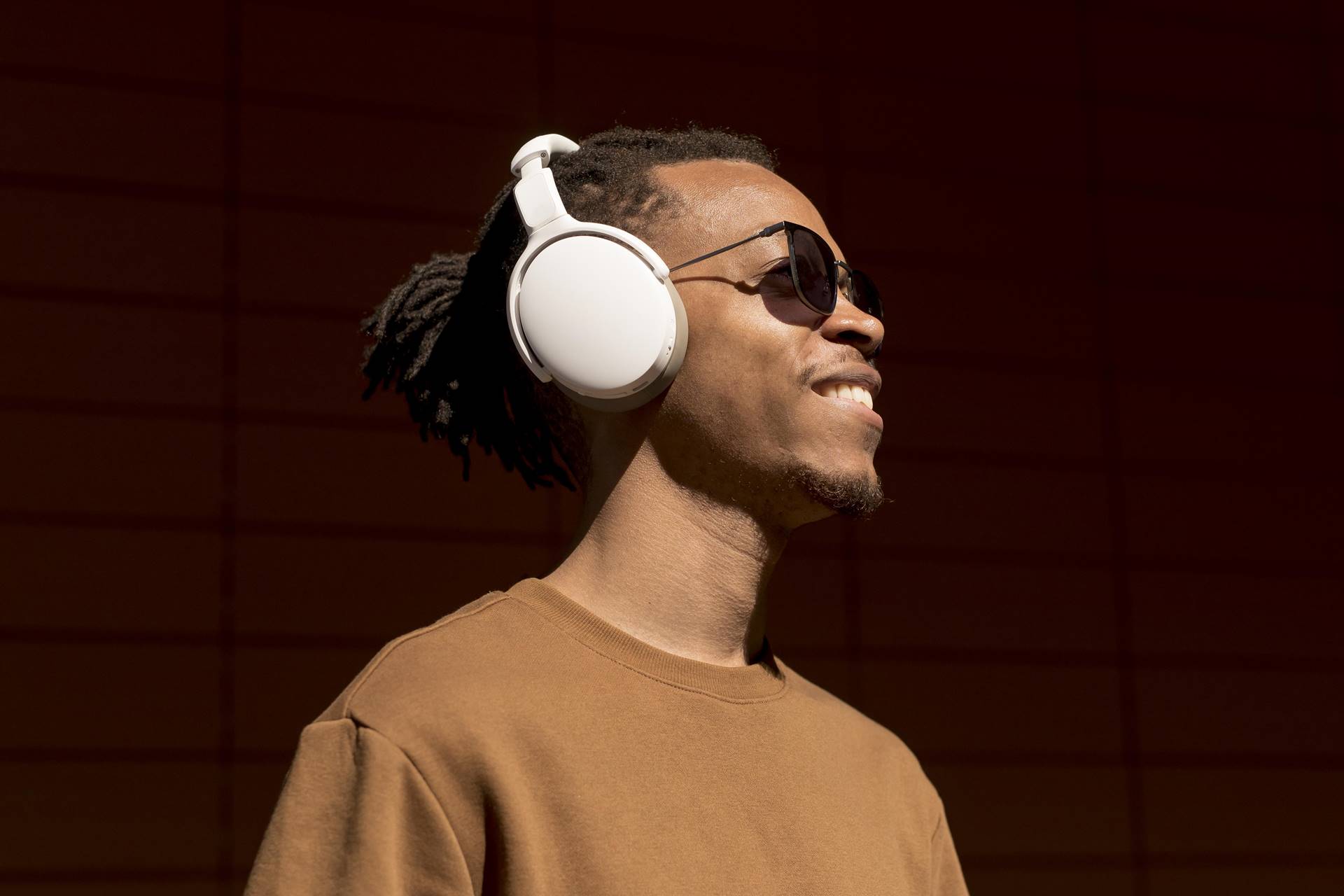For those of us who wear glasses, finding comfortable headphones can be a real challenge. The combination of glasses frames and headphone pressure can often lead to discomfort, pain, and even potential skin damage. But don’t worry – with the right knowledge and techniques, you can enjoy your favorite tunes or podcasts without sacrificing comfort.
In this comprehensive guide, we’ll explore:
- The common challenges faced by glasses wearers when using headphones
- Various types of headphones and their compatibility with glasses
- Tips and tricks for optimizing comfort
- Recommendations for glasses-friendly headphones
- And much more!
Whether you’re a music enthusiast, a gamer, or someone who frequently uses headphones for work, this article will help you find the perfect balance between audio quality and comfort. We’ll cover everything from over-ear headphones to bone conduction technology, ensuring you have all the information you need to make an informed decision.
So, if you’ve ever wondered how to wear headphones with glasses comfortably, you’re in the right place. Let’s dive in and discover the solutions that will allow you to enjoy your audio experience without the pain!
II. Understanding the Challenges of Wearing Headphones with Glasses
Before we dive into solutions, it’s crucial to understand the common issues that glasses wearers face when using headphones. This knowledge will help you identify your specific challenges and choose the most effective remedies.
A. Common Issues When Wearing Headphones with Glasses
1. Pressure Points on Temples
One of the most frequent complaints among glasses wearers is the pressure applied to the temples. When headphones press against the arms of your glasses, it can cause discomfort and even pain, especially during extended listening sessions. This pressure can lead to headaches and soreness, making it difficult to enjoy your audio experience fully.
2. Discomfort Behind Ears
The area behind the ears is another sensitive spot where glasses and headphones intersect. The combination of the glasses’ arms and the headphone band can create friction and pressure, leading to irritation and discomfort. This issue is particularly noticeable with over-ear headphones that wrap around the entire ear.
3. Glasses Slipping or Shifting
When headphones press against your glasses, they can cause your frames to shift or slip down your nose. This not only affects your vision but also requires frequent adjustments, interrupting your listening experience. Constantly pushing your glasses back into place can be frustrating and distracting, especially during activities like working or gaming.
B. Factors Affecting Comfort
1. Headphone Design (Over-ear, On-ear, In-ear)
The type of headphones you use significantly impacts your comfort level when wearing glasses. Here’s a brief overview:
- Over-ear headphones: These fully enclose your ears and can provide excellent sound quality, but they may exert more pressure on your glasses’ arms.
- On-ear headphones: While they don’t enclose the entire ear, they still press directly on the ear and can interfere with glasses.
- In-ear headphones: These generally cause the least interference with glasses but may not provide the same audio experience as larger headphones.
For a more detailed comparison of headphone types, check out our guide on selecting the best headphones for your needs.
2. Glasses Frame Style
The design of your glasses plays a crucial role in how comfortable they are with headphones. Factors to consider include:
- Thickness of the frame arms
- Material of the frames (metal vs. plastic)
- Shape and curve of the arms
Glasses with thinner, more flexible arms tend to be more comfortable when worn with headphones. Some glasses are even designed specifically for use with headphones, featuring flatter or more pliable arms.
3. Individual Facial Structure
Everyone’s face is unique, and this individuality extends to how glasses and headphones fit. Factors like the shape of your head, the size of your ears, and the distance between your temples can all affect comfort levels. What works perfectly for one person may be uncomfortable for another, which is why it’s essential to consider your specific needs when choosing headphones.
Understanding these factors will help you make informed decisions about both your glasses and headphone choices. In the following sections, we’ll explore various solutions and techniques to address these common issues and enhance your listening comfort.
III. Types of Headphones for Glasses Wearers


When it comes to finding the perfect headphones for glasses wearers, there are several types to consider. Each has its own set of advantages and potential drawbacks. Let’s explore the options:
A. Over-ear Headphones
1. Pros and Cons for Glasses Wearers
Pros:
- Excellent sound quality and noise isolation
- Often more comfortable for long listening sessions
- Some models feature “glasses relief” systems
Cons:
- Can put pressure on glasses frames
- May cause discomfort behind the ears
- Larger and less portable than other options
2. Best Over-ear Headphones for Glasses
Some top choices for glasses wearers include:
- Sony WH-1000XM4: Known for their comfort and excellent noise cancellation
- Bose QuietComfort 35 II: Feature soft ear cushions and a lightweight design
- Beyerdynamic DT 770 PRO: Offer velour ear pads for added comfort
B. On-ear Headphones
1. Compatibility with Glasses
On-ear headphones can be a good middle ground for glasses wearers. They don’t envelop the entire ear, which can reduce pressure on glasses frames. However, they still rest on the ear, which may cause discomfort for some users.
2. Recommended Models
- Beats Solo3 Wireless: Comfortable for many glasses wearers and offer good sound quality
- Jabra Elite 45h: Lightweight and designed for comfort
C. In-ear Headphones and Earbuds
1. Benefits for Glasses Wearers
In-ear headphones and earbuds are often the most comfortable option for glasses wearers as they don’t interfere with glasses frames at all. They’re also highly portable and great for active use.
2. Top Earbuds for Glasses Users
- Apple AirPods Pro: Offer excellent sound quality and noise cancellation
- Jabra Elite 75t: Known for their comfortable fit and good sound
- Sony WF-1000XM4: Provide top-notch sound quality and noise cancellation
D. Bone Conduction Headphones

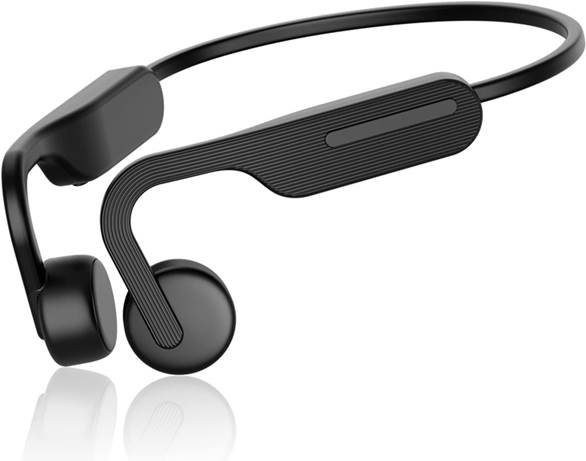
1. How They Work with Glasses
Bone conduction headphones are an excellent option for glasses wearers as they don’t interfere with the ears at all. They work by sending vibrations through the cheekbones directly to the inner ear, leaving the ear canal open.
2. Popular Bone Conduction Models
- AfterShokz Aeropex: Lightweight and comfortable, even with glasses
- Shokz OpenRun: Designed for sports and active use, work well with glasses
E. Smart Glasses with Built-in Audio

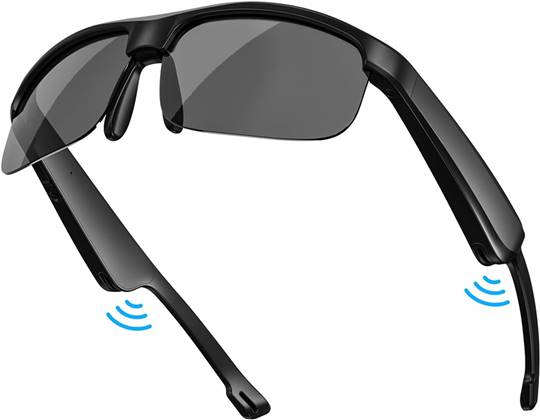
1. Bose Frames and Similar Products
For those looking for an all-in-one solution, smart glasses with built-in audio can be an excellent choice. These combine sunglasses or prescription lenses with audio capabilities.
- Bose Frames: Offer stylish designs with open-ear audio
- Razer Anzu Smart Glasses: Combine blue light filtering or polarized lenses with audio
2. Sunglasses with Bluetooth Headphones
There are also options that combine sunglasses with more traditional earbuds:
- Fauna Audio Glasses: Stylish sunglasses with built-in audio
- OhO sunshine Bluetooth Sunglasses: Affordable option with polarized lenses
When choosing headphones to wear with glasses, consider your specific needs, comfort preferences, and intended use. It may take some trial and error to find the perfect pair, but with the variety of options available, you’re sure to find a solution that works for you.
For more information on selecting the right headphones, check out our guide on questions to ask when buying headphones.
IV. Choosing the Right Headphones for Glasses Wearers
When you’re a glasses wearer, selecting the perfect headphones becomes even more crucial. Let’s explore the key features to look for and some of the best options for specific uses.
A. Key Features to Look For
1. Adjustable Headbands
An adjustable headband is crucial for glasses wearers. It allows you to fine-tune the fit, reducing pressure on your glasses’ arms. Look for headphones with a wide range of adjustment to ensure they can accommodate your head size and glasses comfortably.
2. Swiveling Ear Cups
Ear cups that can swivel or rotate help distribute pressure more evenly around your ears and glasses. This feature allows the headphones to conform to the shape of your head and glasses, reducing discomfort during long listening sessions.
3. Memory Foam Padding
Memory foam ear cushions are a game-changer for glasses wearers. They mold to the shape of your head and glasses, creating a comfortable seal without putting excessive pressure on your frames. Look for headphones with thick, high-quality memory foam padding for optimal comfort.
4. Glasses-Friendly Design
Some manufacturers have developed headphones specifically with glasses wearers in mind. These may include features like:
- Cutouts or channels in the ear cups to accommodate glasses arms
- Softer materials in areas that come into contact with glasses
- Lightweight designs to reduce overall pressure
B. Best Headphones for Specific Uses
1. Gaming Headsets for Glasses Wearers
Gamers who wear glasses need headsets that remain comfortable during long gaming sessions. Here are some top picks:
- SteelSeries Arctis Pro Wireless: Features a ski goggle suspension headband and airweave ear cushions for comfort
- Turtle Beach Stealth 700 Gen 2: Includes a ProSpecs™ glasses-friendly design
- HyperX Cloud Flight: Known for its lightweight design and comfortable ear cups
For more options, check out our guide on the best gaming headsets for glasses wearers.
2. Noise-Cancelling Headphones Compatible with Glasses
For those seeking peace and quiet without sacrificing comfort, consider these noise-cancelling options:
- Bose QuietComfort 35 II: Renowned for their comfort and excellent noise cancellation
- Sony WH-1000XM4: Offers adaptive sound control and soft ear cushions
- Sennheiser Momentum 3 Wireless: Features adjustable clamping pressure for comfort
Learn more about noise-cancelling headphones for glasses wearers in our detailed guide.
3. Wireless Options for Glasses Users
Wireless headphones offer the convenience of cord-free listening. Here are some glasses-friendly wireless options:
- Jabra Elite 45h: Lightweight on-ear design with soft ear cushions
- Beats Solo3 Wireless: Adjustable fit with comfort-cushioned ear cups
- AfterShokz Aeropex: Bone conduction technology that doesn’t interfere with glasses
Explore more options in our article on the best wireless headphones for glasses wearers.
Remember, comfort is subjective, and what works for one person may not work for another. It’s always a good idea to try on headphones if possible or check the return policy when purchasing online. With the right pair of headphones, you can enjoy your audio experience without compromising on comfort, even while wearing glasses.
V. Optimizing Your Glasses for Headphone Use
For glasses wearers, finding the perfect balance between clear vision and comfortable headphone use can be challenging. However, with the right approach to selecting and adjusting your glasses, you can significantly improve your experience.
A. Selecting Glasses Frames
When choosing new glasses with headphone use in mind, consider the following factors:
1. Thin Temple Arms
Opt for glasses with thin temple arms. Thinner arms create less pressure when sandwiched between your headphones and your head. This can significantly reduce discomfort during extended listening sessions.
2. Flexible Materials
Look for frames made from flexible materials like titanium or certain types of plastic. These materials can better absorb pressure from headphones and conform to your head shape, reducing pain points.
3. Adjustable Nose Pads
Glasses with adjustable nose pads allow for a more customized fit. This can help distribute the weight of your glasses more evenly, reducing pressure on your ears and temples when wearing headphones.
B. Adjusting Your Current Glasses
If you’re not in the market for new glasses, you can still optimize your current pair for headphone use:
1. Loosening Temple Arms
Visit an optician to have your temple arms slightly loosened. This can reduce pressure on your head without compromising the fit of your glasses.
2. Repositioning Nose Pads
Adjusting your nose pads can alter how your glasses sit on your face. Experiment with different positions to find one that works well with your headphones.
C. Consider Contact Lenses for Extended Headphone Use
If you frequently use headphones for long periods, consider switching to contact lenses. This eliminates the physical interference between your glasses and headphones, potentially increasing comfort significantly.
VI. Techniques for Comfortably Wearing Headphones with Glasses
Even with optimized glasses, proper wearing techniques can further enhance your comfort when using headphones.
A. Proper Positioning of Headphones with Glasses
1. Placing Headphones Over Glasses
When putting on your headphones, carefully position them over your glasses. Ensure that the ear cups fully encompass your ears without putting undue pressure on your glasses’ arms.
2. Adjusting Headband Tension
Most headphones allow you to adjust the tension of the headband. Experiment with different tensions to find a balance between a secure fit and minimal pressure on your glasses.
B. Using Glasses Spacers or Pads
Glasses spacers or pads can provide additional comfort by creating a small gap between your glasses and your head.
1. DIY Solutions
You can create your own spacers using soft materials like foam or fabric. Cut small pieces and attach them to your headphones where they meet your glasses.
2. Commercial Products
There are commercial products designed specifically for this purpose. For example, the Prospecs Glasses Relief System is a popular choice among glasses wearers who frequently use headphones.
C. Taking Regular Breaks
No matter how comfortable your setup is, it’s important to give your ears and head regular breaks.
1. Importance of Rest Periods
Take off your headphones every hour or so to relieve pressure and allow your skin to breathe. This can prevent soreness and potential skin issues.
2. Exercises to Relieve Pressure Points
During your breaks, gently massage your temples and the areas behind your ears. You can also do some simple neck stretches to relieve tension. For more tips on preventing discomfort, check out our guide on how to prevent hearing loss from headphones, which includes advice on healthy listening habits.
Remember, finding the perfect combination of glasses and headphones may take some trial and error. Don’t be discouraged if your first attempts aren’t perfect. With patience and these techniques, you can achieve a comfortable setup that allows you to enjoy your audio without discomfort.
VII. Specific Brand Solutions
Several leading audio brands have recognized the challenges faced by glasses wearers and have developed products with features to enhance comfort. Let’s explore some specific brand solutions that cater to those who wear glasses.
A. Bose Products for Glasses Wearers
Bose has been at the forefront of innovative audio solutions, including options for glasses wearers:
- Bose Frames: These are sunglasses with built-in open-ear audio. They eliminate the need for traditional headphones, making them an excellent choice for glasses wearers. For more information, check out our article on selecting the best headphones, which includes unconventional options like these.
- Bose QuietComfort 35 II: Known for their comfort, these over-ear headphones feature soft ear cushions and a lightweight design that many glasses wearers find comfortable for extended use.
B. Beats Headphones with Glasses
Beats, now a part of Apple, offers several models that work well with glasses:
- Beats Solo Pro: These on-ear headphones have a sleek design and adjustable fit that can work well with glasses.
- Powerbeats Pro: As true wireless earbuds, these completely avoid interference with glasses, making them a great option for active glasses wearers.
C. Sony WH-1000XM Series with Glasses
Sony’s flagship noise-cancelling headphones are popular among glasses wearers:
- Sony WH-1000XM4: These headphones feature soft, pressure-relieving ear pads that mold to the shape of your head, potentially reducing pressure on glasses.
- Sony WH-1000XM5: The latest in the series, these headphones have an even lighter design and improved ear pads, which could provide additional comfort for glasses wearers.
For a detailed comparison of noise-cancelling headphones, including how they perform with glasses, see our guide on the best low-cost noise-cancelling headphones.
D. Gaming Headsets (e.g., Turtle Beach Glasses-Friendly Models)
Gamers who wear glasses have specific needs, and some brands have developed solutions:
- Turtle Beach Stealth 700 Gen 2: This headset features a ProSpecs™ Glasses Relief System, which creates a small channel in the ear cushions to alleviate pressure on glasses.
- SteelSeries Arctis Pro: While not specifically marketed for glasses wearers, many users find the ski goggle suspension headband and airweave ear cushions comfortable with glasses.
- Astro A50 Wireless: These high-end gaming headphones are known for their comfort, with many glasses wearers reporting a good fit.
For more options and detailed reviews, you might want to check out our article on the best headphones with microphones for Skype, which includes gaming headsets that can be comfortable for glasses wearers.
Remember, while these brands and models have features that can benefit glasses wearers, individual experiences may vary. It’s always best to try on headphones if possible or check the return policy when purchasing online. The perfect pair of headphones for you will depend on your specific glasses, head shape, and personal preferences.
VIII. Maintenance and Care
A. Cleaning both headphones and glasses
Proper maintenance of both your headphones and glasses is crucial for comfort and longevity:
- Clean your glasses daily with a microfiber cloth and lens cleaner.
- Wipe down headphone ear cushions with a slightly damp cloth to remove oils and debris.
- For deeper cleaning, use alcohol wipes on headphone surfaces (avoid speaker elements).
- Clean the headband and any crevices with a soft brush to remove dust and dirt.
B. Storing headphones properly to maintain shape
Proper storage helps maintain the shape and integrity of your headphones:
- Use the original case or a sturdy headphone stand when not in use.
- Avoid hanging headphones by the headband, which can stretch it out over time.
- Store in a cool, dry place away from direct sunlight and heat sources.
- For foldable headphones, be gentle when folding to prevent stress on hinges.
C. Regularly checking and adjusting fit
Periodically check and adjust your headphones to ensure optimal fit with your glasses:
- Inspect for any loose screws or parts and tighten as needed.
- Check the headband adjustment to ensure it hasn’t loosened over time.
- Examine ear cushions for wear and replace if flattened or damaged.
- Adjust the clamping force if your headphones allow for it.
IX. Troubleshooting Common Issues
A. Dealing with headphone hair
Headphone hair can be a nuisance, especially for glasses wearers. Try these tips:
- Use a looser fitting headband to reduce pressure on your hair.
- Try wearing a thin beanie or headscarf under your headphones.
- After use, dampen your hair slightly and style as usual to restore its shape.
- Consider switching to in-ear headphones for extended use to avoid this issue altogether.
B. Reducing glasses fog when using headphones
Fogging can occur when headphones trap heat around your ears. Here’s how to minimize it:
- Ensure your glasses sit slightly forward on your nose to allow air circulation.
- Use anti-fog spray or wipes on your lenses before wearing headphones.
- Choose headphones with breathable ear cushions to reduce heat buildup.
- Take short breaks to allow both your glasses and ears to cool down.
C. Managing cable tangles with glasses
For wired headphones, cable management is crucial:
- Use a cable clip to secure the wire to your clothing, reducing movement.
- Consider a short cable or a right-angle plug to minimize interference.
- Opt for wireless headphones to eliminate cable issues entirely.
- When storing, use the over-under wrapping technique to prevent tangles.
D. Addressing pain points and discomfort
If you’re experiencing discomfort, try these solutions:
- Add small foam or felt pads where your glasses meet the headphones.
- Adjust your glasses to sit slightly higher on your nose.
- Try headphones with a suspension headband design for reduced pressure.
- Take frequent breaks and massage any sore spots gently.
X. Expert Tips and Tricks
A. Advice from audiologists
Audiologists recommend the following for glasses wearers:
- Choose headphones with a wider headband to distribute pressure more evenly.
- Opt for over-ear designs rather than on-ear for better comfort with glasses.
- Consider custom-molded in-ear monitors for the best fit and sound isolation.
- Be mindful of volume levels to protect your hearing in the long term.
B. Recommendations from long-term glasses and headphone users
Experienced users suggest:
- Invest in high-quality, comfortable headphones – it’s worth the extra cost.
- Rotate between different types of headphones to prevent pressure buildup.
- For gaming or long sessions, consider glasses with flat or flexible temples.
- Use glasses with anti-slip nose pads to prevent slipping when using headphones.
C. Balancing audio quality with comfort
To achieve both comfort and great sound:
- Look for headphones with a wide frequency response for better overall sound.
- Choose models with good passive noise isolation to enhance audio quality.
- Consider open-back headphones for a more natural soundstage, if isolation isn’t crucial.
- Test different ear tip materials and sizes for in-ear models to find the best seal and comfort.
XI. Alternative Solutions
A. VR audio headsets for glasses wearers
For VR enthusiasts who wear glasses:
- Look for VR headsets with adjustable lenses to potentially use without glasses.
- Consider prescription lens inserts made specifically for your VR headset.
- Choose VR headsets with a glasses spacer to accommodate your frames.
- For audio, use bone conduction headphones that don’t interfere with the VR headset or glasses.
B. Open-ear audio solutions
Open-ear options can be ideal for glasses wearers:
- Try bone conduction headphones that sit in front of your ears.
- Consider “audio glasses” with built-in speakers in the temples.
- Look into directional speaker neckbands for a glasses-free experience.
- Explore open-ear true wireless earbuds that don’t fully block the ear canal.
C. Speaker systems for home use
For a completely glasses-friendly audio experience at home:
- Invest in a quality bookshelf speaker system for immersive sound without headphones.
- Consider a soundbar for a compact yet powerful audio solution.
- Explore multi-room speaker systems for whole-home audio coverage.
- For gaming or computer use, look into monitor-mounted or desk-mounted speakers.
XII. Conclusion
A. Recap of key points
We’ve covered a wide range of topics to help glasses wearers enjoy their audio experiences:
- The importance of choosing the right headphone design and materials.
- Techniques for adjusting both headphones and glasses for optimal comfort.
- Maintenance and care tips to prolong the life of your audio gear.
- Troubleshooting common issues like headphone hair and glasses fog.
- Expert advice and alternative solutions for various listening scenarios.
B. Encouragement to experiment with different solutions
Remember, finding the perfect audio solution while wearing glasses is a personal journey. Don’t be afraid to:
- Try different headphone styles and brands to find your ideal fit.
- Experiment with various adjustment techniques and accessories.
- Explore alternative audio solutions like bone conduction or speaker systems.
- Seek advice from audiophiles and tech communities for personalized recommendations.
C. Importance of personalized comfort in enhancing audio experiences
Ultimately, the best audio setup is one that you can enjoy comfortably for extended periods. By prioritizing both comfort and sound quality, you’ll be able to:
- Immerse yourself fully in your favorite music, games, or podcasts.
- Avoid discomfort and potential long-term issues from ill-fitting equipment.
- Maximize the value of your investment in audio gear.
- Enhance your overall quality of life through better audio experiences.
Remember, the world of audio technology is constantly evolving. Stay curious, keep experimenting, and don’t settle for discomfort. With the right approach, you can enjoy exceptional sound while wearing your glasses comfortably. For more audio advice and product recommendations, be sure to explore our other articles.




